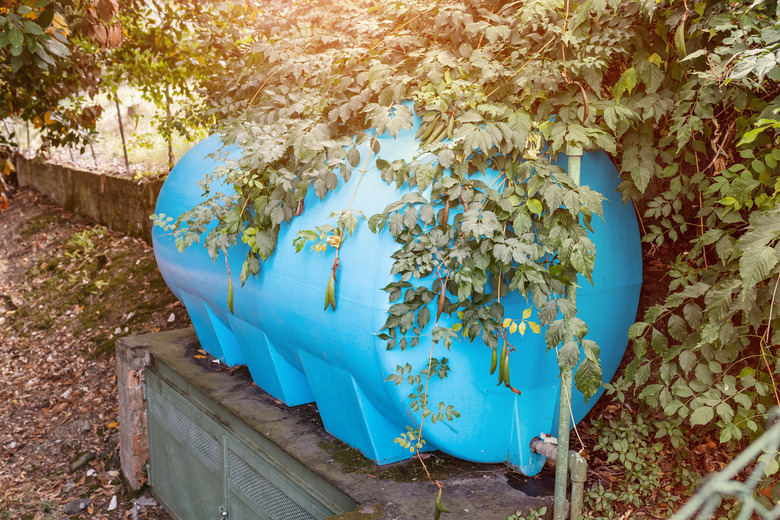How To Clean A Water Storage Tank
A residential water storage tank holds the water that does all kinds of jobs around your house, and it's important to make sure it stays clean. Otherwise, bacteria, algae and other grime can build up in the tank and find its way into your water supply. Thankfully, the cleaning job can be done in a few easy steps with materials you likely already have on hand.
Prepping the Tank
Prepping the Tank
First, drain your water storage tank. You want as little water as possible in the tank in order to effectively scrub away any growth.
Depending on the type of tank you have, you might have to use a submersible sump pump or connect the tank's valve to a hose that will deposit the water somewhere outside. Make sure you place the hose in an area where an onslaught of water won't lead to erosion or flooding.
Scrubbing the Tank
Scrubbing the Tank
Once the water has drained from your tank, it's time to start cleaning. Mix four parts hot water to one part household bleach and use it to scrub the inside of the tank. The tools you use to scrub will depend on the size and positioning of the tank. You might be able to use a hard-bristled brush or a mop with an adjustable handle. Power washers are another great tool for eliminating any kind of bacteria, silt or algae that may have grown on the sides of the tank.
If the diluted bleach mixture doesn't work, you can also leave baking soda on the stubborn grime for about two hours, then come back and scrub it off using a sponge and hot water or a power washer.
Pay attention to corners and crevices where bacteria would have room to grow undetected. If you're able, you might want to use a smaller instrument, such as a toothbrush, to access those hard-to-clean spots.
When you're sure you've rid the tank of any growth, drain the tank of the dirty scrubbing water.
Flush the Pipes
Flush the Pipes
Your water pipes can also be home to bacteria. As a final cleaning step, pour some more of your cleaning mixture into the water storage tank and use your pump to run it into your home's pipes. Run your taps with hot water until the water that emerges from them are free of the cleaning solution. Then, rinse the tank thoroughly and dry it completely.
It's important to get the tank as dry as possible during this final draining. If you're having trouble emptying the tank completely with the valve, you can use a bucket, towel, large sponge or handheld vacuum to soak up as much water as possible.
In order to make sure that the water both in your tank and running through your pipes is free of any leftover bleach or chlorine from the cleaning solution, pick up some test strips at your local hardware store or from an online retailer. Follow the instructions on the strips for dipping them into the water for testing. You should find that there are no traces of chlorine or pathogens and can then refill your newly cleaned water tank.
The average home water storage tank should be cleaned about once a year. However, if your tank receives direct sunlight, it's more prone to algae and bacteria growth. You might want to clean it more often, such as every three to six months.
